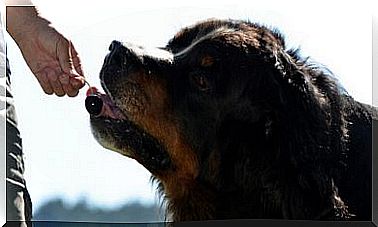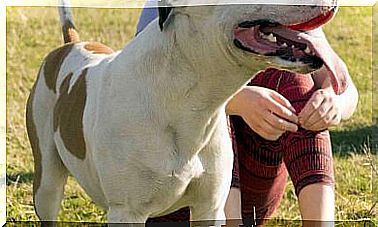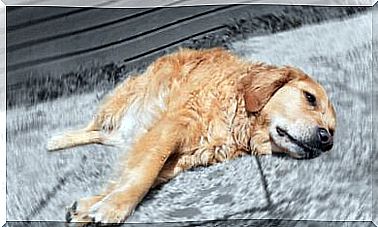Mange In Puppies: Causes And Symptoms

Mange is a skin disease caused by mites that feed on the skin. In general, this disease is highly contagious. Mange in puppies is very itchy.
Types of mange
Depending on which type of mite causes the mange, this disease is divided into different forms. The following is a brief description of the different types of mange:
Ear mange
Often referred to as ear mange, this species is more likely to be observed in cats than in dogs. When it occurs in dogs, it usually comes from places such as kennels or pet stores that have poor hygienic conditions.
Sarcoptic mange
This disease is characterized by particularly severe itching. The mite responsible belongs to the genus Sarcoptes . Although this form can in principle occur in all mammal species, it is particularly common in dogs.
Cheyletiellose
The person responsible for this type of mange is a parasite belonging to the species Cheyletiella yasguri . This microscopic mite has a distinctive reddish color and can easily spread between dogs and cats.
The advantage is that the treatment is simple and usually goes without further complications.
Demodicosis
The mite responsible is a typical resident in the skin of dogs, although it can also be found in cats. The form of transmission is very specific and is explained below.
Mange in puppies: demodicosis
This disease is caused by mites belonging to the genus Demodex . As noted, cases of demodicosis have been observed in both dogs and cats.
Is it contagious?
This disease is not considered contagious. It is a self-healing disease that occurs in puppies. As the puppies grow up, they develop immunity to mites and the symptoms of mange go away.
In addition, it is rare for these mites to spread to other pets unless the animal is immunocompromised. This type of mange is also not transmitted to humans, while other types, such as sarcoptic mange, can also affect humans.
Causes of the appearance of mange in puppies
The type of transmission is very special. The mothers transmit this microscopic mite to their pups after birth. More precisely, while breastfeeding.
This mite is usually found on dogs’ skin and most of the time it doesn’t cause any problems. The disease, however, from when the mite begins to multiply uncontrollably.
As the number of mites increases, the dog’s hair roots are destroyed. The disease also causes severe itching.
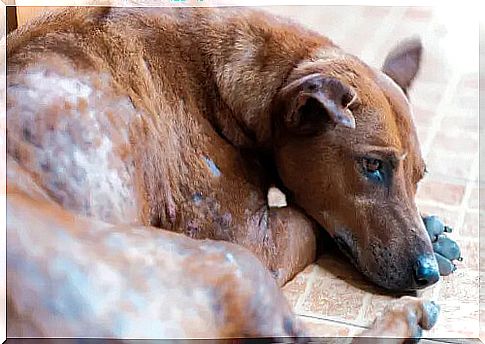
The mange usually occurs in puppies under the age of 18 months. However , it has also been observed in adult dogs that have severely weakened immune systems.
Mange in puppies: symptoms
This disease is often characterized by severe itching, but it does not always occur.
Usually, lesions begin in areas of thin fur, such as around the eyes or mouth. In addition, entire areas of fur on the limbs or trunk can be lost.
The disease can occur locally or be generalized. When it is generalized, the animals lose patches of fur of considerable size on various parts of the body.
Other noticeable symptoms are reddish and flaky skin on hairless areas or a bad odor. In addition, subsequent infections cause pain, while dandruff and bald spots can be observed as the disease progresses.
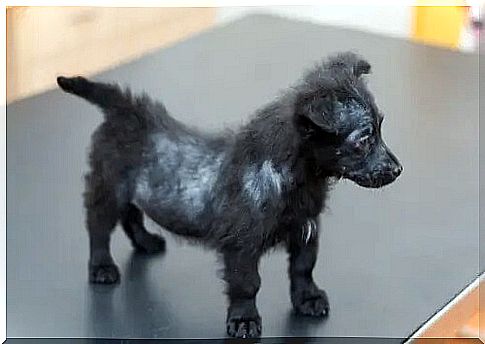
Treating Mange in Puppies
When the doctor has done the appropriate tests (such as looking for mites), he will confirm the diagnosis. He will then prescribe the most appropriate medication for each case.
Depending on whether the disease is local or generalized, different measures are taken:
Local mange
Under these circumstances, the problem will resolve on its own after a few weeks or months. The puppy will develop immunity to the mite and the clinical symptoms will disappear. Therefore, no treatment is required.
Generalized mange
However, if it is generalized mange, something must be done about it. Treatment may vary depending on the type of medicine prescribed by the doctor.
The drugs are applied directly to the skin or administered orally. Your vet will likely first prescribe an ointment to treat the skin.
Of course, the vet will decide on the therapy required. However, you should know that it will be a lengthy process that can take several months. It is a long procedure because when the mites are gone, the preventive treatment is continued for another month.
Summary
Mange in puppies is not contagious. This condition primarily affects puppies, but it has also been identified in cats.
